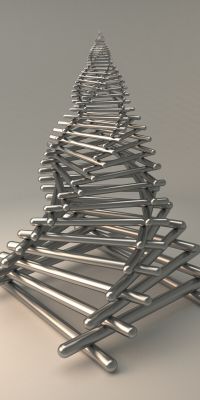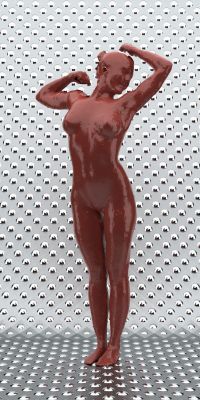 |  | An Extended and Simple Metropolis-Hasting Method
There is no need to any form of preprocessing. It takes only 40 code lines.
more
A Simple and Robust Mutation Strategy for the Metropolis Light Transport
This paper presents a new mutation strategy for the Metropolis light transport algorithm,
which works in the unit cube of pseudo-random numbers instead of mutating in the path space.
This transformation makes the integrand have lower variation and thus increases the acceptance probability of the mutated samples.
Higher acceptance ratio, in turn, reduces the correlation of the samples,
which increases the speed of convergence.
We use both local mutations that choose a new random sample in the neighborhood of the previous one,
and global mutations that make "large steps", and find the samples independently.
Local mutations smooth out the result, while global mutations guarantee the ergodicity of the process.
Due to the fact that samples are generated independently in large steps,
this method can also be considered as a combination of the Metropolis algorithm with a classical random walk.
If we use multiple importance sampling for this combination,
the combined method will be as good at bright regions as the Metropolis algorithm
and at dark regions as random walks.
The resulting scheme is robust, efficient, but most importantly, is easy to implement and to combine
with an arbitrary random-walk algorithm.
pdf
A Microfacet Based Coupled Specular-Matte BRDF Model with Importance Sampling
This paper presents a BRDF model based on the analysis of the photon collisions with the microfacets
of the surface. The new model is not only physically plausible, i.e. symmetric and energy conserving,
but provides other important features of real materials, including the off-specular peak
and the mirroring limit case. Using theoretical considerations the reflected light is broken down
to a specular component representing single reflections and a matte component accounting
for multiple reflections and re-emissions of previously absorbed photons.
Unlike most of the previous models, the proportion of the matte and specular components is not
constant but varies with the viewing angle. In order to keep the resulting formulae simple,
several approximations are made, which are quite accurate but allow for tabulation, fast calculation and
even for accurate importance sampling.
pdf
|  |  |






